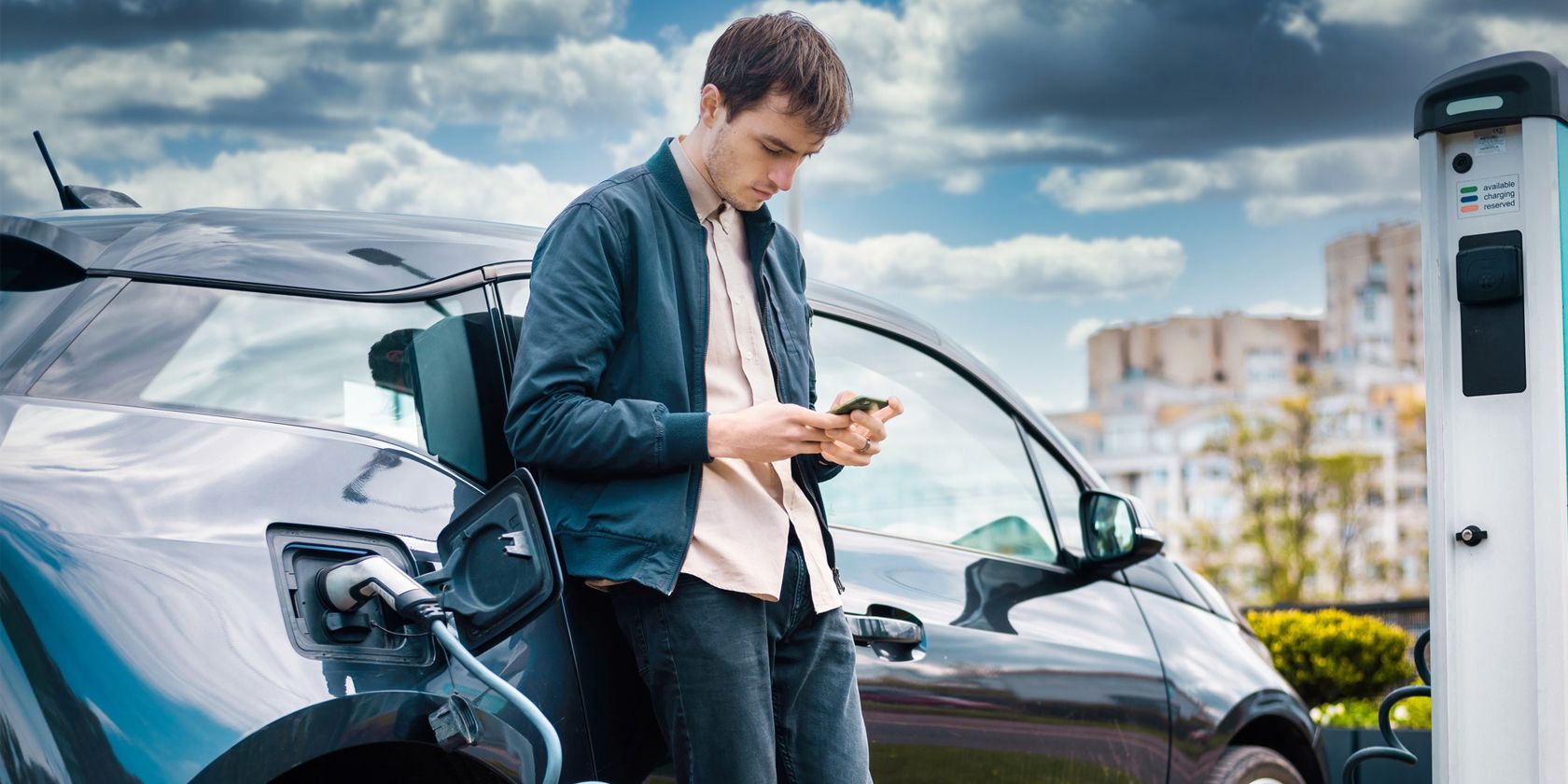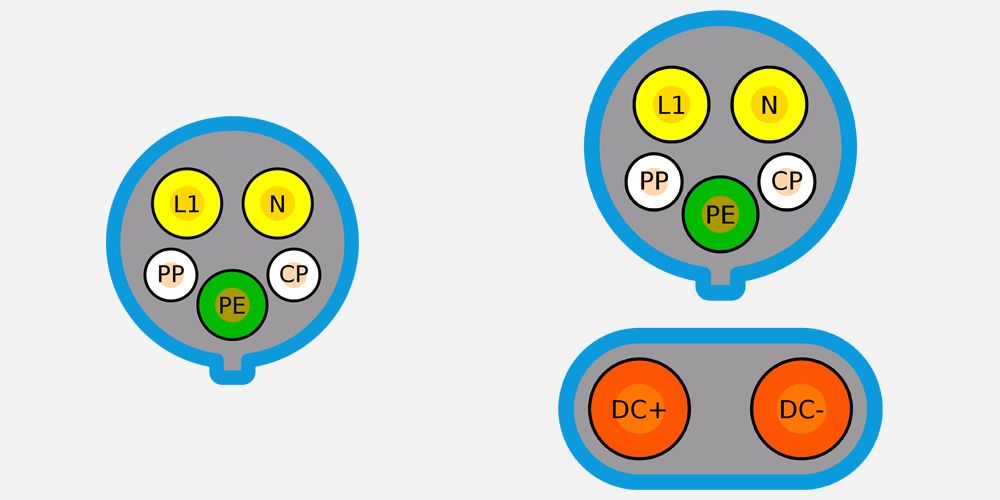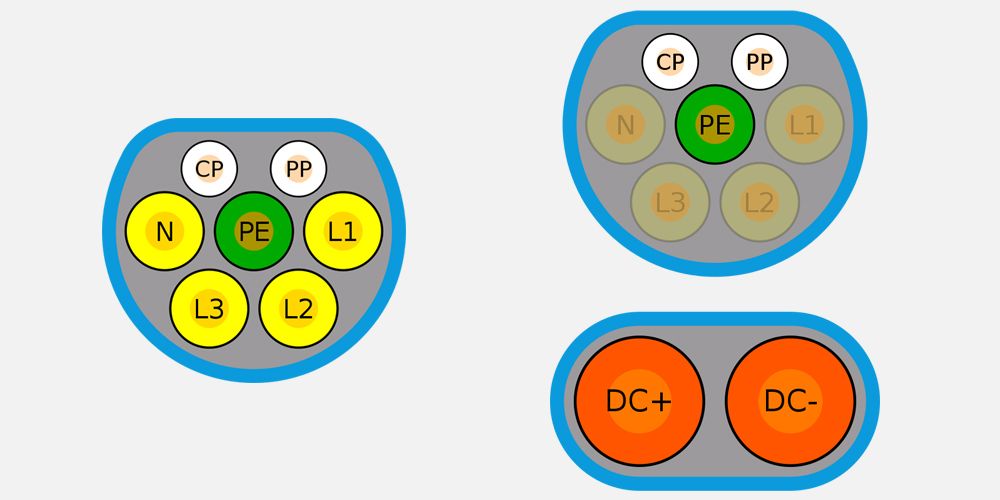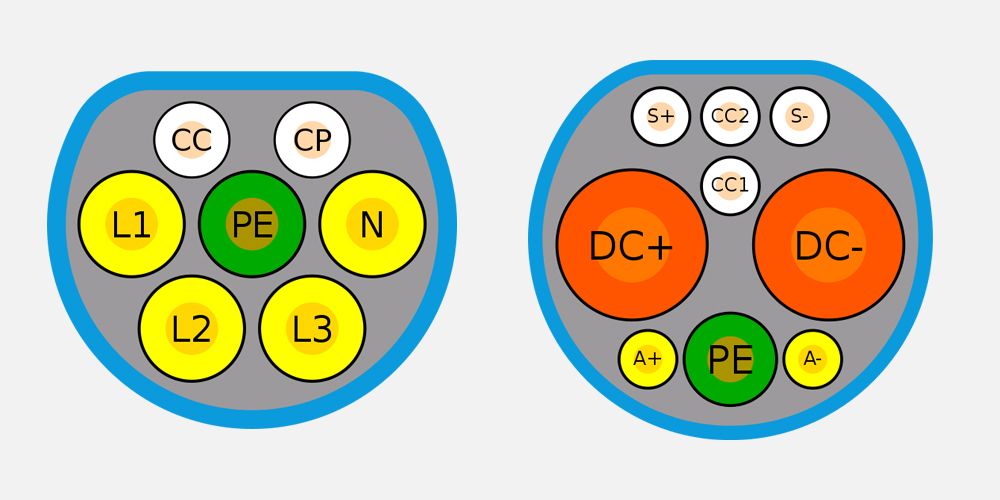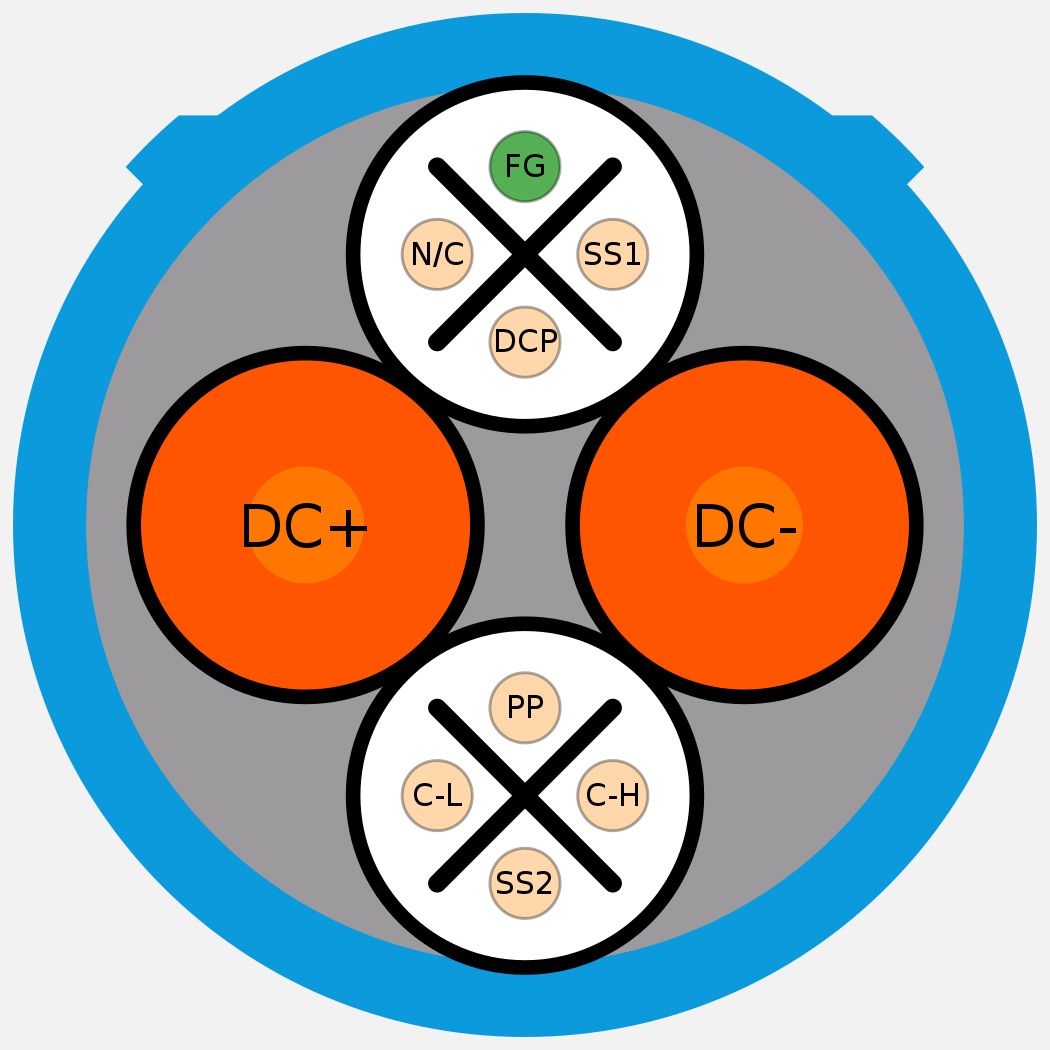Electric vehicle (EV) charging connectors can differ significantly by location and model, making it crucial for EV owners to understand the distinctions between various connector types. This knowledge is essential in order to ensure the effective and convenient charging of their vehicles.
So, let's take a closer look at EV charging connectors by region.
Classification of EV Charging Connectors
EV charging connectors vary regionally and by model, with debates still ongoing about standardization and developing a universal plug technology. In the US and Europe, the Combined Charging System (CCS) is widely supported (though it still has regional differences), while Japan uses CHAdeMO and China employs GB/T.
Charging speed is determined by the charging station, cable, and on-board charger (OBC), with the connector being a crucial part of the charging cable. While AC charging stations do not typically have integrated cables, DC fast charging stations have their own cables and connectors. This is due to safety concerns because of the very high voltages that pass through them, as well as the weight of the cables themselves.
Let's explore the different types of connectors in more detail.
North America
In North America, there's a reliable standard for EV charging connectors. The most commonly used connector is the J1772 (Type 1), good for both Level 1 and Level 2 charging (which can deliver up to 120 and 240 volts, respectively) and is compatible with most new EVs sold in the region.
For fast DC charging, the CCS Combo 1 is the standard in North America. The CCS Combo 1 connector integrates features from both AC (Level 1 and 2) and DC (Level 3) fast charging, making it feasible to efficiently and quickly charge an EV with a single connector.
The US version of CCS is based around the J1772 connector, while for the Euro equivalent, the starting point is the Type 2 plug.
Tesla’s Charging Connector
Tesla employs a uniform connector that caters to all charging levels: Level 1, Level 2, and DC rapid charging. Unlike other standards, Tesla's connector is proprietary and capable of accepting a wide range of voltages. Therefore, there is no need for a distinct connector specifically for DC rapid charging.
Nonetheless, Tesla's own fast-chargers called Superchargers are only compatible with Tesla vehicles (although Tesla has opened some Supercharger stations for other EVs.) Tesla is responsible for installing and maintaining these stations, so it would like to keep as many of them exclusive to its own customers. The reason it's opening some of them up is to take advantage of government subsidies.
These charging stations are part of a private infrastructure accessible almost exclusively to Tesla car owners, and an authentication process verifies that the car is a Tesla before allowing access to the power. Even with an adapter cable, it's impossible to charge a non-Tesla EV at a Tesla Supercharger station, unless it is one of the handful of stations that do allow other brands to plug in.
Tesla vehicles sold in North America now include an adapter that allows for compatibility with charging stations that feature a J1772 connector.
Europe
In Europe, the types of connectors used for EV charging are comparable to those used in North America, although there are a few variations. The primary difference is that the standard household electricity in Europe is 230 volts, which is almost double the voltage used in North America. As a result, there's no Level 1 charging available in Europe.
Additionally, the IEC 62196 Type 2 connector (commonly known as Mennekes) is the standard connector used by all manufacturers in Europe. The exception is Tesla, which still uses its proprietary connector for Model S and Model X vehicles sold in Europe, but has now switched to the Type 2 connector for the Euro-spec Model 3. There is speculation that Tesla will also adopt the European Type 2 connector for the Model S and Model X in the future.
In Europe, the CCS standard is used for DC fast charging, which is similar to North America. The CCS system in Europe merges the Type 2 connector with two DC quick charge pins, resembling the J1772 connector used in North America.
China
The Guobiao Standardization Commission oversaw the creation of the GB/T plug in China, which is the sole connector used in the country. This lack of competition from alternative connectors has facilitated the growth of the charging infrastructure, contributing to China having the highest number of charging stations and the largest percentage of electric cars in the world.
While the GB/T plug resembles Type 2 at first glance, the reverse arrangement of cables makes them incompatible.
Japan
Five Japanese automakers developed CHAdeMO as the original DC plug and sought to promote it as a global standard starting in 2010, but it was not widely adopted. Nonetheless, the number of chargers with CHAdeMO connectors has increased from 10,000 in 2015 to 25,600 in 2019, with the majority being installed in Europe and Japan.
The European Parliament aims to phase out CHAdeMO gradually in favor of CCS by requiring each fast charging station to have at least one CCS connector. This is also helped by the fact that electric car manufacturers themselves are abandoning CHAdeMO.
Currently, only two electric cars are still produced with this connector: the Nissan Leaf and Mitsubishi Outlander plug-in hybrid, although both automakers have officially announced that they're moving to CCS in the near future.
There is a second version of the CHAdeMO connector, which can charge up to 400 kW, and the association of Japanese car manufacturers is working with China to develop an ultra-fast connector capable of charging up to 900 kW. CHAdeMO is expected to remain a standard only in Japan (as well as in China, to a lesser extent.)
How Can You Tell Which Connector Your EV Has?
Although it may appear overwhelming, the process of charging an electric car is actually quite straightforward. Most electric cars utilize the standard connector in their respective markets. Tesla is the only exception, but its vehicles come with an adapter to make them compatible with the market standard. Third-party adapters are available for non-Tesla EVs to use Tesla Level 1 or 2 charging stations.
When it comes to DC fast charging, Tesla's Supercharger network is exclusive to Tesla vehicles and cannot be accessed with an adapter due to an authentication process (unless it's one of the few Supercharger stations that are free for other EVs to use.) CHAdeMO is used by Nissan and Mitsubishi, while most other EVs use the CCS charging standard.
If you're charging your electric car at home and are concerned about the various EV charging connector types, there's no need to worry. The charging unit you purchase in your market will come with the industry-standard connector for your EV, unless you actively search for one with a different standard.

